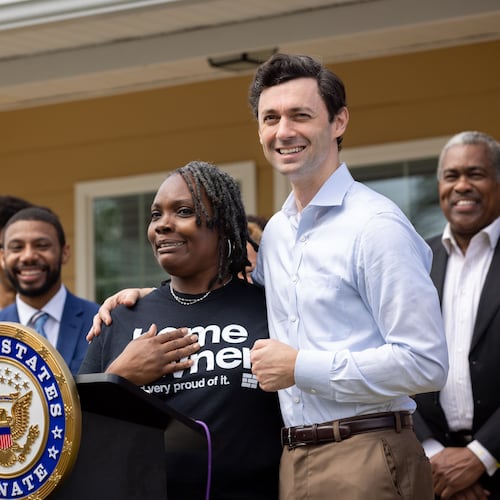History celebrates winners and often forgets losers. Yet it is worth remembering on this Independence Day that Americans both won and lost the Revolutionary war. The struggle for independence was as much a brutal civil war fought between Americans (“Patriots” versus “Loyalists”) as it was a conventional conflict between American and British armies. Americans killed Americans in large numbers.
The act of choosing sides divided families and friends, towns and cities. John Adams of Massachusetts, one of the leading revolutionaries and a future president, noted that many of the Tories (a derisive term for Loyalists, implying that they were monarchists) were “my cordial, confidential and bosom friends.”
Benjamin Franklin’s illegitimate son, William, was the royal governor of New Jersey. An ardent Loyalist, he sided with Great Britain during the Revolution, leading his disgusted father to remove him from his will.
About 20 percent of the 2 million white colonists were Loyalists. Other “American” opponents of the Revolution included several Indian tribes, free blacks, and thousands of runaway slaves enticed by the promise of freedom in exchange for their allegiance to the Crown.
Loyalists were present in every colony but were most numerous in New York, New Jersey, eastern Maryland, and the back country of the Carolinas and Georgia. Colonists belonging to the Church of England (Anglican) tended to be Loyalists. Many merchants involved in facilitating the import-export trade also supported the king, as did civil servants appointed by the Crown to colonial administrative positions.
Many motives animated Loyalists but perhaps the most common concern was that the widespread resistance to British regulations and taxes was descending into chaos and even anarchy.
The Revolution’s civil war generated fratricidal passions and vengeful violence. In back country hamlets, neighbors killed neighbors and fathers turned on sons. Edward Lacey, a young South Carolina Patriot who commanded a militia unit, had to tie his Tory father to a bedstead to prevent him from informing the British of his whereabouts.
Chilling brutalities occurred on both sides. One Pennsylvania Loyalist, John Stevens, testified that Patriots dragged him “by a rope fixed about his neck” across the Susquehanna River. In Virginia, the planter Charles Lynch set up vigilante courts to punish Loyalists by “lynching” them — which in this case meant whipping them. Others were tarred and feathered.
In the Carolinas and Georgia, British army commanders encouraged their poorly disciplined Loyalist allies to wage a scorched-earth war of terror, arson and intimidation. “In a civil war,” the British general Charles Cornwallis declared, “there is no admitting of neutral characteristics.” He urged his commanders to use the “most vigorous measures to extinguish the rebellion.”
Tory militiamen took civilian hostages, assaulted women and children, burned houses and churches, stole property, bayoneted wounded Patriots, and tortured and executed unarmed prisoners.
Vengeful Patriots responded in kind. When Georgia Loyalist Thomas “Burnfoot” Brown refused to join the revolutionary side, a mob of Patriots bludgeoned him, took his scalp, tarred his legs, and then held his feet over a fire, costing him several toes. Brown thereafter conducted a personal war of vengeance. After a battle near Augusta, Georgia, Brown ordered Loyalists to hang 13 Patriot prisoners from a staircase banister.
That the Revolution embodied a civil war was especially evident on Oct. 7, 1780, at the crucial Battle of Kings Mountain on the South Carolina border, some 30 miles west of Charlotte.
There was only one British soldier, the Scottish-born Maj. Patrick Ferguson, among the 2,000 combatants. The Americans at Kings Mountain who fought for King George III chose the wrong side that day.
The Patriot militia inflicted a devastating defeat on Ferguson’s Loyalist army, a third of whom were killed or wounded. Ferguson was one of the dead, his mangled body riddled by seven bullets. Of the 660 captured Loyalists, 36 were tried for various war crimes, and nine were hanged.
The decisive Patriot victory at Kings Mountain demonstrated that the American rebels could win their civil war. Few Carolinians were willing to join the Loyalist side thereafter.
A year later, when Cornwallis surrendered his army to George Washington and his French allies at Yorktown, the British commander acknowledged that the uncivil war he had unleashed in the Carolinas had only inflamed Patriot resentment and resistance.
As for the Loyalists, some 80,000 of them, including Indians and runaway slaves, fled America after the Revolution, dispersing themselves throughout the British Empire.
The departure of so many Loyalists was one of the most important social consequences of the Revolution. Their confiscated homes, vast tracts of land, and vacated jobs created new social, economic and political opportunities for Patriots.
Ironically, some of the Loyalist refugees took with them an American-born desire for greater political participation as they created new lives within the British Empire.
It was no coincidence that Canada achieved self-governing powers earlier than any other territory within the Empire — thanks in part to the ideals professed by transplanted American Loyalists.
The ideal of independence proved to be infectious — even to some of its opponents.
David E. Shi, an Atlanta native, is president emeritus and professor of history at Furman University. He is the co-author of “America: a Narrative History.”
About the Author
Keep Reading
The Latest
Featured


